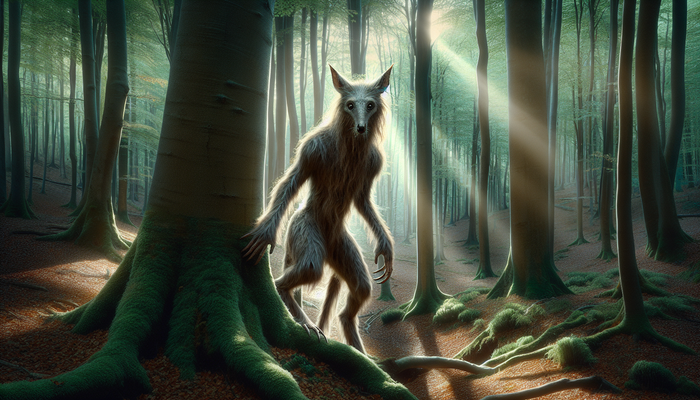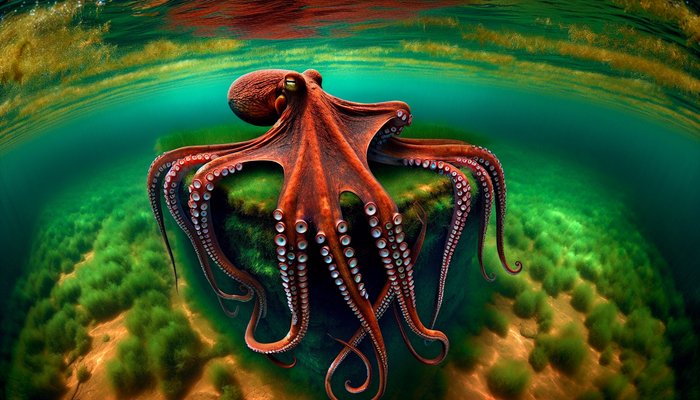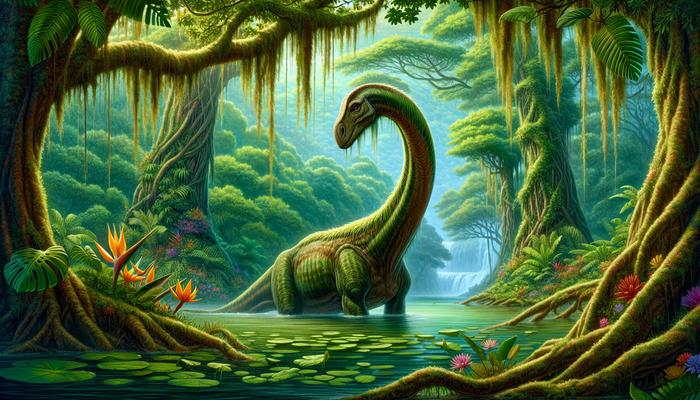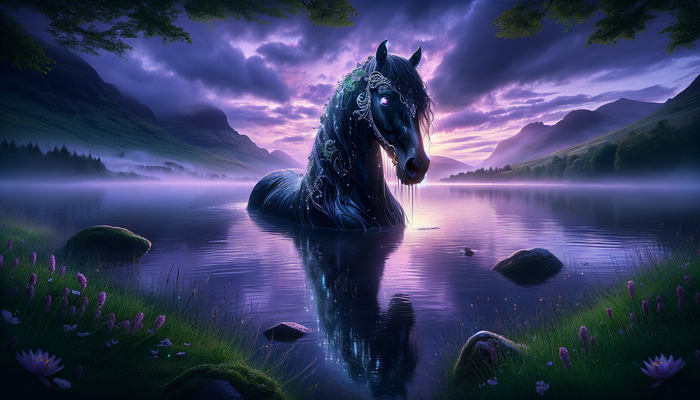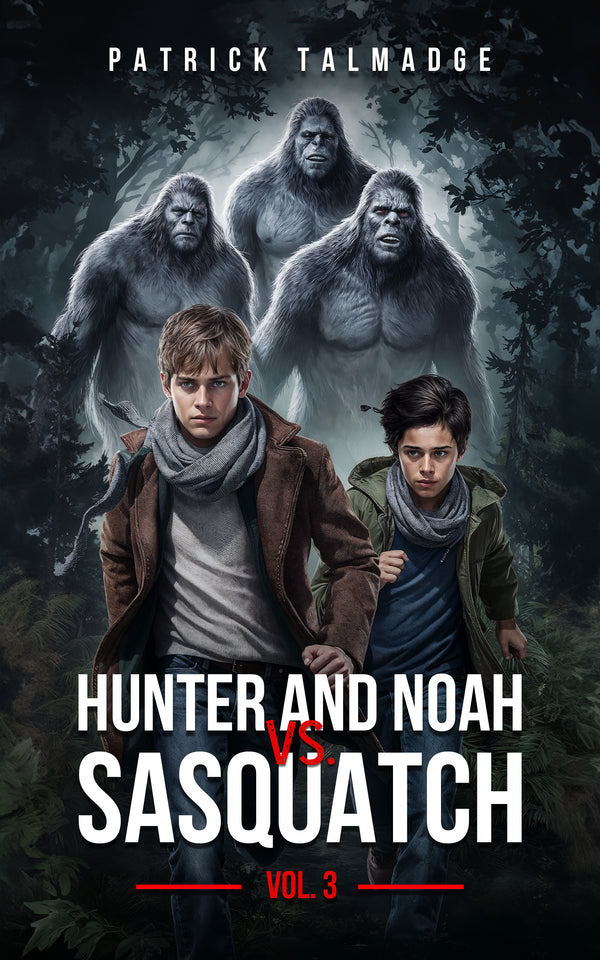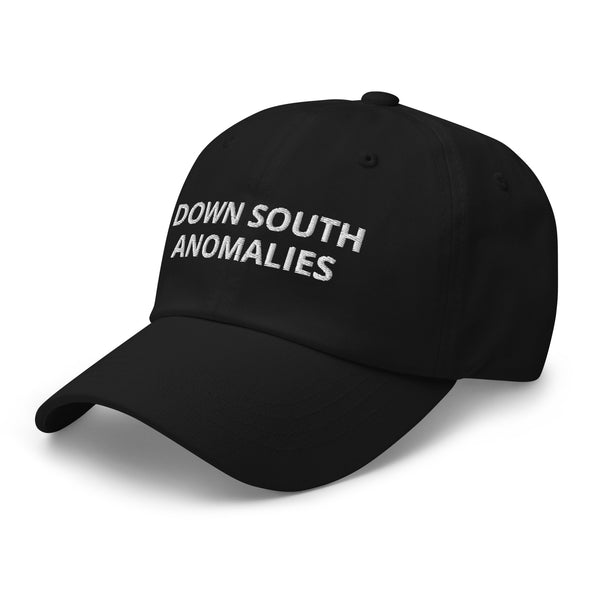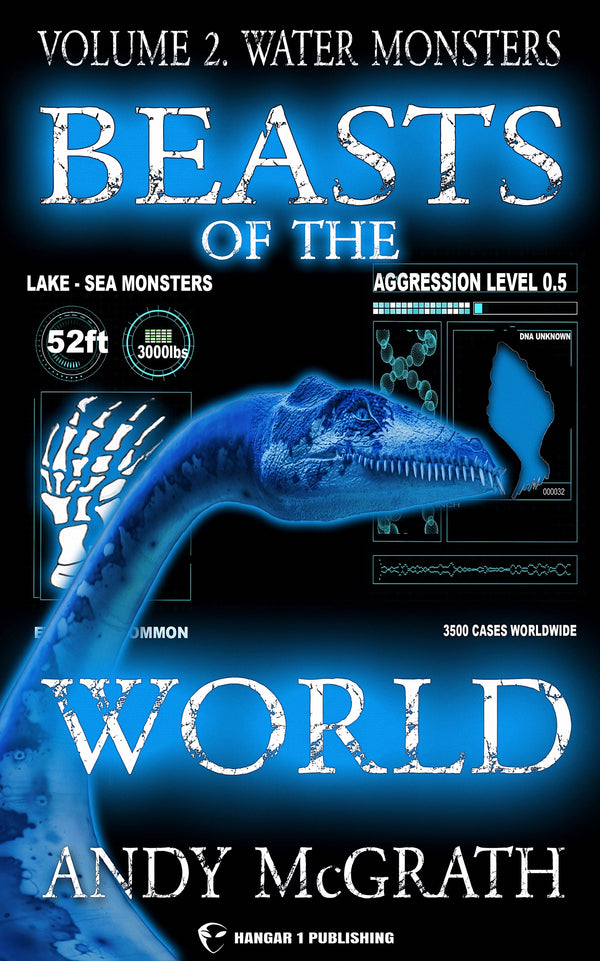Maine's Mysterious Cryptids
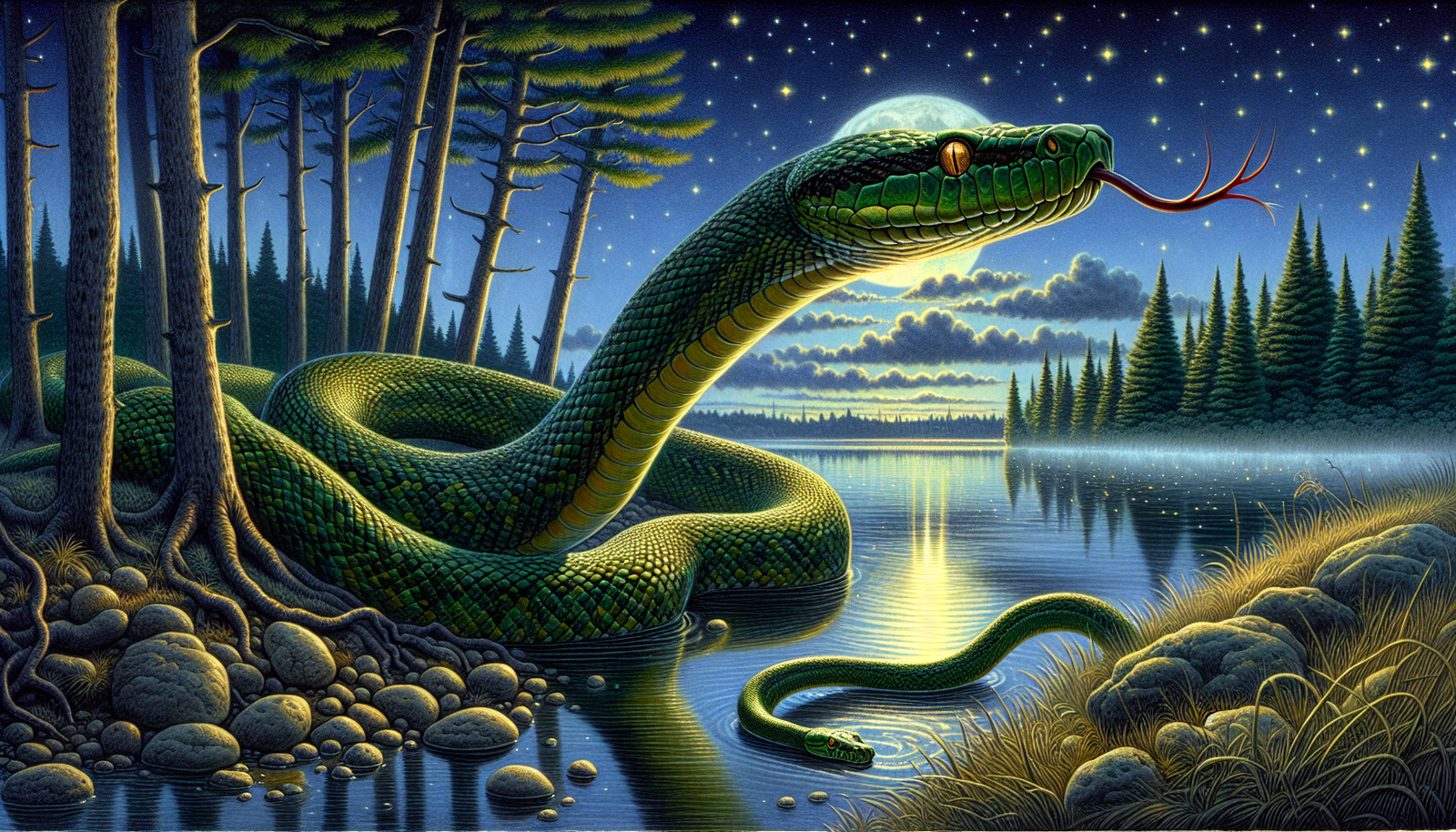
Lucas Jennings, Cryptozoologist and Adventurous Naturalist
Introduction
Imagine wandering through the dense forests of Maine, where the silence is broken only by the rustle of leaves and the distant call of wildlife. But what if there's more lurking in the shadows than just the known creatures of the wild? For centuries, tales of mysterious monsters have emerged from the remote corners and unexplored waters of the Pine Tree State, captivating the imaginations of locals and visitors alike. As a dedicated cryptozoologist, I have spent years venturing into Maine's wilderness in search of these elusive beings, driven by curiosity and a relentless desire to push the boundaries of natural science.
In this article, I will take you on an expedition through the enigmatic world of Maine cryptids, from the serpentine waters of the Presumpscot River to the ghostly woods between Katahdin and Moosehead Lake. We'll explore indigenous legends, historic maritime accounts, and contemporary sightings that hint at a hidden menagerie yet to be fully unveiled. Our journey will shed light on the challenges and controversies faced by cryptozoologists seeking evidence in the remote wilds of Maine. My goal is to provide a comprehensive guide to the state's most mysterious monsters while fostering a spirit of open-minded inquiry and ethical exploration.
Before we delve into the shadows, let's set the stage. Maine's vast wilderness, marked by dense forests, rugged mountains, winding rivers, and jagged coastlines, offers the perfect backdrop for cryptid tales. The Pine Tree State is also home to the world's only cryptozoology museum, located in Portland. As an Adventurous Naturalist, I see Maine's expansive and untamed landscape as the ideal habitat for potentially undiscovered creatures. Each new report and piece of evidence adds another thread to the intriguing tapestry of the state's cryptozoological history. Now, let us begin our expedition through the world of Maine cryptids. The first stop - the serpentine mystery lurking in the waters of Westbrook.
The Serpentine Mystery of Westbrook - Wessie Unveiled
In June 2016, Westbrook, Maine became the epicenter of intrigue when reports began to emerge of an enormous snake slithering through the area. Christened "Wessie", this mysterious serpent captured the public imagination with descriptions of its monstrous size and peculiar presence along the Presumpscot River.
The earliest sighting came from a local resident who claimed to have seen a snake over 10 feet long with a head "the size of a softball" near a playground. Days later, a Westbrook police officer corroborated the report, spotting an unnaturally large snake near the riverbank. Fueled by these accounts, speculation ran rampant about Wessie's origins and identity. Could this be a Burmese python that escaped or was released by its owner? Or was Wessie a previously unknown native cryptid that had lived in stealth along the Presumpscot?
In August 2016, a breakthrough discovery added a tantalizing piece to the puzzle - the shed skin of a gigantic snake was found in Westbrook, later identified as belonging to a Burmese python. The skin was over 10 feet long, suggesting the serpent itself could have potentially measured 16 feet or more in length. This evidence lent credence to the idea that Wessie was likely an exotic pet on the loose, though some cryptozoologists held out hope that an unknown giant snake still inhabited the area.
The skin was eventually acquired by the International Cryptozoology Museum, where it remains on display as a testament to the captivating mystery surrounding Wessie's brief but dramatic emergence. To this day, questions persist about how long the python survived in the wild, if it may have bred, and whether another giant snake still lurks in the shadowy depths of Maine's rivers and wetlands.
The saga of Wessie exemplifies the challenges of investigating cryptids in Maine's remote wilderness. As an Adventurous Naturalist, I am fascinated by the intersection of folklore, eyewitness accounts, and biological evidence that such cases present. The tantalizing possibility that an exotic or new species may be hiding in the Maine woods keeps my sense of wonder alive. Of course, verifying the existence of these elusive creatures requires exhaustive field research, technology, and no small amount of luck. Still, Wessie's secrets continue to call to me from the murky waters. Perhaps the next expedition will finally uncoil the mystery of Westbrook's serpentine enigma.
Cassie - The Casco Bay Sea Monster
Leaving the freshwater habitats of southern Maine, our cryptid quest now takes us to the rugged coastline of Casco Bay, where centuries of maritime lore tell of a mysterious sea monster named Cassie. From my numerous interviews with fishermen and review of historic accounts, Cassie has been a fixture in the cultural imagination of coastal Mainers for generations.
The earliest recorded sighting dates back to 1779, when Cassie was reportedly seen by sailors in Casco Bay. Far from a one-off event, encounters with Cassie persisted well into the 20th century. Descriptions of the creature depict a serpentine body extending up to 100 feet, with a horse-like head and undulating humps reminiscent of a prehistoric plesiosaur. The creature's coloration has been likened to the mottled brown patterns of a cusk or flounder, allowing it to camouflage with the rocky seafloor.
One of the most detailed eyewitness accounts comes from lobster fisherman Ole Mikkelsen, who described seeing Cassie off the coast of Cape Elizabeth in 1958. According to Mikkelsen, the creature was well over 100 feet long, with a tail like a giant mackerel. His report aligned closely with the physical attributes ascribed to Cassie across centuries of alleged sightings.
Of course, skeptics argue that Cassie is likely a misidentification of known marine animals, such as basking sharks, giant squid, or oarfish. Admittedly, the ocean offers limited visibility and the human mind can play tricks on even the most experienced seafarers. Nevertheless, the persistence of Cassie legends points to an enduring element of mystery along Maine's coast. There are still depths and distances of Casco Bay that remain unexplored. Who is to say what may linger in those shadowy underwater realms?
As a cryptozoologist, I cannot definitively prove or disprove Cassie's existence. I can only gather stories, compare accounts, and continue exploring Maine's coastline with an open mind. The legend of Cassie represents a cultural touchstone for generations of Mainers living along the rugged shore. Whatever its true nature, the lore of Cassie adds an element of intrigue to the often treacherous waters of the bay. There are certainly mysteries yet to be uncovered beneath the surface, perhaps some prehistoric survivor or new species yet to be classified. Only time and continued field research will reveal the truth behind Casco Bay's legendary sea monster.
The Specter Moose - A Ghostly Giant of the Maine Woods
Leaving the coast behind, our journey takes us inland, into the dense forests that blanket much of Maine's interior. Here, between the soaring pines and overgrown trails, lumberjacks and hunters have long told tales of a mysterious giant moose known as the Specter Moose. By all accounts, this is no ordinary bull moose. According to local lore, the Specter Moose is an albino behemoth possessing almost supernatural traits.
Reports describe the creature as a massive, ghostly white moose exceeding normal proportions. Some claim its hide is bulletproof, with hunters' shots passing straight through the beast to no effect. Sightings of the Specter Moose date back over a century, with reports concentrated in the remote wilderness between Mount Katahdin and Moosehead Lake.
In the early 1900s, a lumberjack named Rupert Gunderson claimed to have spotted the Specter Moose at dusk along the Kennebec River. In his own words, "The beast stood at least eight feet tall, with antlers spanning fifteen feet. Its fur was white as the snow caps on Katahdin. I unloaded my rifle at the creature, but it barely flinched as the bullets struck its hide. Then it turned and vanished into the trees without a sound."
Encounters like Gunderson's have fueled debate over whether the Specter Moose is an exceptionally rare albino or something more ethereal, perhaps a forest spirit. Some Passamaquoddy tales speak of a moose god known as Pamola that inhabits Mount Katahdin. However, descriptions of Pamola do not neatly align with modern accounts of the Specter Moose.
As an Adventurous Naturalist, I know better than to dismiss such stories merely as folklore. The Maine woods still harbor many secrets and barely explored terrain where unknown creatures may lurk. While belief in a bulletproof ghost moose may seem far-fetched, the essence of discovery lies in questioning assumptions and investigating every possibility. As I continue to document eyewitness accounts and explore Maine's vast forests, I hold out hope that I may one day come face to face with the legendary Specter Moose.
Kiwakwa - The Fearsome Humanoid of Wabanaki Lore
Our cryptid quest now takes a turn from the zoological to the anthropological, venturing into the ancient lore of Maine's indigenous people. Within the oral traditions of the Wabanaki tribes, including the Penobscot, Passamaquoddy, and Maliseet, exists tales of a fearsome humanoid entity known as Kiwakwa. According to Wabanaki folklore, Kiwakwa is a giant, hairy hominid that stalks the forests of Maine, with a particular craving for human flesh.
Descriptions of Kiwakwa paint it as a towering, muscular beast covered in dark hair, with an intense hatred of humans. While some versions claim Kiwakwa is a cursed human, others insist it is a distinct creature, not quite animal but not quite man either. Much of the Kiwakwa lore focuses on its taste for humans, especially during harsh winters when food is scarce. There are chilling stories of hunters deep in the woods who were ripped apart by Kiwakwa's massive hands and devoured raw. Some say its howl alone is enough to stop a man's heart.
Understandably, the tales of the man-eating Kiwakwa were used to instill fear and warn tribespeople away from remote areas of the forest. However, the consistency of oral accounts across generations and Wabanaki territories points to a genuine belief in this creature's existence. As someone who has spent much time learning from indigenous cultures, I take care to approach these stories with respect, not just as mythology but as a window into a unique perspective on the natural world.
The Wabanaki tribes inhabited Maine for thousands of years, developing an intimate connection with the surrounding wilderness. As an Adventurous Naturalist, I cannot ignore their warnings about Kiwakwa, which indicate a deep understanding of the environment. Perhaps, as some tribespeople believe, Kiwakwa is a protective forest spirit. Or it may be an undiscovered hominid, a relic of the remote past. With an open and respectful mind, I intend to continue searching for traces of this fearsome legend in the ancient woodlands of Maine.
The Enigma of Maine's Black Panthers
Our journey now takes us to the rugged borderlands of Maine's vast wilderness, where reports of large black panthers have puzzled wildlife experts for generations. Despite assurances from state wildlife agencies that mountain lions are extinct in this region, many rural Mainers claim to have undeniable proof that a small population of black panthers, or melanistic cougars, still inhabits the state's forests.
As early as the 1940s, loggers and hunters in Maine's northwest corner told tales of enormous black cats with long, ropelike tails stalking the woods. Sightings seemed to increase in frequency from the 1980s onward, with the beasts reported across the state from Aroostook County south to Franklin County. Witnesses consistently describe a charcoal feline ranging from 5-9 feet in length, sometimes leaping 20 feet between trees.
One intriguing account comes from August 1998, when three eyewitnesses spotted a black panther near a deer carcass just outside Baxter State Park. Wildlife officials insisted it must be a bobcat or lynx, but the witnesses held firm on identifying a much larger cat. Since then, the number of reports has steadily grown, along with photographic and video evidence. Several images of possible cougars have been captured on game cameras, though none definitive.
As someone who has extensively researched melanistic mutations, I find the eyewitness descriptions compelling. However, officially verifying the existence of a small, isolated population of black panthers in Maine poses challenges. These elusive cats likely avoid populated areas, with enormous ranges spanning the vast wilderness. Still, the continued reports from credible observers keep this cryptid on my radar. I suspect a few cougars may have crossed the border from Canada at some point, evading detection by sticking to the thickest forests and remote mountains of Maine. Somewhere in those rugged borderlands, the truth about Maine's "black cats" still awaits discovery.
Challenges and Controversies in Cryptozoological Research
Thus far in our expedition, we have encountered serpentine monsters, spectral giants, fearsome humanoids, and phantom panthers. The diversity of Maine cryptids reflects the many ecological and cultural niches of this unique state. However, investigating the reality behind these tales is rife with challenges, skepticism, and debate within the scientific community. Here, I will outline some of the key obstacles facing today's cryptozoologists and the approaches my colleagues and I take in response.
Firstly, we must contend with outright dismissal from mainstream science. Many biologists view cryptozoology as a pseudoscience, lumping it together with clearly fictional pursuits like hunting Bigfoot or the Loch Ness Monster. They argue that in the modern era, no large unknown animals could still elude detection. But as an Adventurous Naturalist, I point to the continued discovery of new species and the abundant unexplored wilderness where cryptids could lurk unseen. An open-minded perspective reveals that there are still mysteries to be solved in the natural world.
Secondly, securing compelling photographic evidence of cryptids poses challenges. Game camera traps are an excellent tool, but Maine's dense forests make strategic placement difficult. Drones and thermal imaging technology show promise for aerial surveys of remote areas. As technology progresses, so too will our ability to pursue cryptids in their natural habitat. Patience and persistence are key.
The third major hurdle is preserving scientific integrity. Cryptozoologists must thoroughly evaluate each piece of evidence and account for all plausible explanations. Video can be manipulated and eyewitness reports, though valuable, contain inherent subjectivity. Careful documentation and cross-verification against known species are vital to avoid confirmation bias. We must let the facts lead the search, not the other way around.
Finally, conservation is paramount. The quest for cryptids cannot come at the cost of ecosystems or indigenous communities. Responsible, non-invasive techniques are essential, as is protecting cryptid habitats. If these creatures exist, they likely rely on the remoteness of Maine's forests and mountains. Thus, environmental advocacy goes hand-in-hand with cryptozoology.
For skeptics, the lack of a type specimen, such as a body or DNA sample, means cryptids remain mythical. But from my perspective, there are still far too many unknowns to close the book on these creatures just yet. As technology improves and new wilderness is explored, the next adventurer may finally step forward with irrefutable evidence. Until then, the search continues, guided by curiosity, ethics, and a spirit of scientific rigor. The mysteries of Maine's wilds call to me, and I must answer.
Embracing the Shadows
As we conclude this expedition through the enigmatic realm of Maine cryptids, I hope your sense of wonder at nature's secrets has been renewed. What captivates me most about these elusive creatures is the glimpse they offer into the unknown. Their existence blurs the line between reality and myth, inviting us to question rigid assumptions about the natural world.
Cryptids represent the metaphorical "shadows" of discovery - those dark corners of wilderness, culture, and imagination not yet illuminated by the light of understanding. Their allure speaks to the human impulse to explore, understand, and appreciate the marvels of our world, whether natural or supernatural. Enthusiasts and skeptics alike find common ground in the simple urge to uncover mysteries.
So as you wander Maine's ancient forests or gaze upon the fog-veiled sea, embrace the possibility of discovery. Allow your imagination to wander off the beaten path, where the boundaries of known science fade into legend. With an open mind and sense of wonder, who knows what fantastical creatures you may encounter? I, for one, will never stop searching. The cryptids of Maine call to me from the shadows, and I must continue answering. This is only the beginning of the journey.
From Bigfoot to UFOs: Hangar 1 Publishing Has You Covered!
Explore Untold Stories: Venture into the world of UFOs, cryptids, Bigfoot, and beyond. Every story is a journey into the extraordinary.
Immersive Book Technology: Experience real videos, sights, and sounds within our books. Its not just reading; its an adventure.


